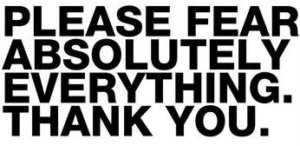In this post, I share 10 Contact Center Operations Management questions for Contact Center leaders who want to gauge their mastery of specific Contact Center know how required for successful operations management.
Because while passion and experience are helpful, Contact Center know how matters too.
A bit of background on the Contact Center Operations Management questions
Managing a Contact Center is a business discipline. It requires very specific know-how. And when I teach Contact Center operations management I cover four modules:
- Managing Wait Time
- Creating Efficiency
- Forecasting the Workload
- Contact Center University
The questions presented below are in multiple choice format and are drawn from the Contact Center management workshops I’ve run around the world for over 20 years.
Read through each question and choose the answer that you think is correct – that’s either a, b, c or d. There is only one correct answer for each question.
The 10 Contact Center Management Questions
1. Which accessibility metric gives management the clearest indication of the wait time a typical caller experiences?
a) Average Speed of Answer
b) Service Level
c) Percent Abandoned
d) Percent Answered
2. Which of the following is the industry standard Service Level?
a) 80% answered in 20 seconds
b) 90% answered in 30 seconds
c) Industry standards only exist by industry (finance, hospitality, healthcare, etc.)
d) There is no industry standard
3. When managing the queue in real-time, which of the following real-time reports should you look at first?
a) Agent status
b) Longest current wait
c) Number of calls in queue
d) Average time to abandonment
4. Which of the following statements is/are TRUE?
I. Occupancy is the percentage of time agents spend talking to customers or completing After Call Work.
II. Occupancy is a result of random call arrival.
III. When Service Level increases, Occupancy increases.
IV. When Occupancy is extremely high for extended periods of time, Agents tend to work harder to clear out the queue.
a) II only
b) I and II only
c) II and IV only
d) I, III and IV only
5. Which one of the following statements is true about Adherence to Schedule?
a) Adherence to Schedule measures the actual login time of an Agent compared with the scheduled login time.
b) The percentage of time Agents spend waiting for calls to arrive is the inverse of Adherence to Schedule.
c) When Adherence to Schedule increases, Utilization increases as well.
d) Within the context of Adherence to Schedule, login time does not include time Agents spend in After Call Work.
6. If an Agent arrives 30 minutes late to work at a Contact Center, which of the following actions would benefit the Center the most? Assume the Agent is unable to consult with his/her Team Leader on the most appropriate action.
a)Stay 30 minutes extra at the end of his/her shift.
b) Skip his/her morning and afternoon breaks, each of which is 15 minutes.
c) Come back from his/her hour lunch break 30 minutes early.
d) Take his/her breaks and lunch as normal and leave at his/her scheduled time.
7. Which one of the following statements is FALSE?
a) Measuring the number of calls handled by Agent is a good productivity standard.
b) Adherence to Schedule is typically an important productivity measure for a Contact Centre Agent handling Service Level-based contacts.
c) When Adherence to Schedule improves Service Level improves as well.
d) Most of what drives the Average Handling Time lies outside the control of the Agent
8. The best definition of Time Series forecasting is:
a) A method where the past is a good basis for predicting the future
b) A method which is only used in rare circumstances
c) A method that covers the qualitative side of forecasting
d) A method that does not require judgement
9. Your Call Centre supports email and is expecting 200 email messages to arrive between 9:00 a.m. and 10:00 a.m. The Average Handling Time of email messages is 8 minutes. Your promised response time is 4 hours. Assuming the Agents can work uninterrupted on these email messages only, which of the following staffing scenarios would meet your response time objective for these email messages?
I. 4 Agents working from 10:00 a.m. to 5:00 p.m.
II. 9 Agents working from 10:00 a.m. to 1:00 p.m.
III. 14 Agents working from 10:00 a.m. to 12:00 p.m.
IV. 40 Agents who each spend at least an hour working on email from 10:00 a.m. to 1:00 p.m.
a) II only
b) III and IV only
c) II, III and IV only
d) I, II, III and IV
10. Which of the following are ‘factors’ you need to incorporate in a monthly Agent labor budget?
I. Is my Agent in the building?
II. What is the monthly weighted average Occupancy rate?
III. Is my Agent on a break?
IV. Is my Agent on leave?
a) III only
b) I and II only
c) I, II and III only
d) I, II, III and IV
Would you like to know how you did?
https://www.omnitouchinternational.com/contact-centre-kpis-the-green-jaguar
If you’d like to know if your answers are correct I’m happy to help.
I’ve intentionally gone ‘low-tech’ here. There’s no need to register anywhere, set-up an account or pay to access answers. Your name won’t be added to a mailing list unless you give specific permission for it to be added.
Once you’ve answered all the questions just drop me an email to [email protected]
Let me know the question # and the answer that you chose (either a,b,c or d). Remember there is only one correct answer for each question.
You can use the following format in your email to me:
- a
- d
- c
- c (and so on for all the questions)
I always do my best to answer quickly and let you know which ones you got right and what the right answers are for the one(s) you got wrong.
Of course taking a few specific know-how questions won’t fully reflect the experience and effort that have gone into your Contact Center management work.
But it helps to know that it takes more than passion and experience to succeed in the industry.
And it’s the folks who have that know how, combined with their passion & experience, who create great outcomes for their Center. And that’s good for everyone.
Good luck with the questions!
Daniel Ord





 Early in my career in the 90s, I was Vice President of Call Centre & Distribution Operations for Heartland Music. Based in Los Angeles, it was the job that got me into the Contact Center & Customer Experience industry.
Early in my career in the 90s, I was Vice President of Call Centre & Distribution Operations for Heartland Music. Based in Los Angeles, it was the job that got me into the Contact Center & Customer Experience industry. But Conway Twitty was the surge to end all surges.
But Conway Twitty was the surge to end all surges. I’m not exactly sure why Conway Twitty was different. But we were now six weeks into the surge and his sales were still going up.
I’m not exactly sure why Conway Twitty was different. But we were now six weeks into the surge and his sales were still going up. If you’ve been a fair boss, you communicate honestly, and you have a
If you’ve been a fair boss, you communicate honestly, and you have a 


 Formal living rooms may sound old fashioned – but they’re still around.
Formal living rooms may sound old fashioned – but they’re still around. For a University Contact Center, the Agents were instructed to immediately redirect the Caller to the university website if it turned out that the information was available there.
For a University Contact Center, the Agents were instructed to immediately redirect the Caller to the university website if it turned out that the information was available there.  I bet you can imagine what those Agents sounded like when we listened to the calls. Yup that’s right.
I bet you can imagine what those Agents sounded like when we listened to the calls. Yup that’s right.



 QA walks over to our station and while we’re talking to a Customer they give us the time out sign. That’s their signal telling us to wrap the call up quickly so they can conduct our side by side coaching session.
QA walks over to our station and while we’re talking to a Customer they give us the time out sign. That’s their signal telling us to wrap the call up quickly so they can conduct our side by side coaching session.


 From Occupancy rates through to Net Promoter Score we have dashboards and dials for everything. (Even though not everything matters.)
From Occupancy rates through to Net Promoter Score we have dashboards and dials for everything. (Even though not everything matters.) We monitor Customer interactions, document our findings and talk to the Agents about their performance.
We monitor Customer interactions, document our findings and talk to the Agents about their performance.

 It tells you how you did.
It tells you how you did.

 But this Centre served an international Customer base.
But this Centre served an international Customer base. I teach a 3 Parachute Technique when I share the organization’s viewpoint.
I teach a 3 Parachute Technique when I share the organization’s viewpoint. Can you imagine if someone who worked at Starbucks decided that they wanted to make a vanilla latte their own way?
Can you imagine if someone who worked at Starbucks decided that they wanted to make a vanilla latte their own way? 

 Every organisation has its own purpose, its own set of Customers and its own style and brand. So by design, it should have its own kind of service too.
Every organisation has its own purpose, its own set of Customers and its own style and brand. So by design, it should have its own kind of service too. For example, in Email it’s important to write the way you speak and to use inverted pyramid writing when sharing content.
For example, in Email it’s important to write the way you speak and to use inverted pyramid writing when sharing content. It’s hard to be an Agent who is asked to practice on Customers.
It’s hard to be an Agent who is asked to practice on Customers. Interaction coaching is developmental in nature. And it’s always about both sides of the interaction.
Interaction coaching is developmental in nature. And it’s always about both sides of the interaction. Only Response Time contacts, such as Correspondence & Email, can have appropriate volume-based targets.
Only Response Time contacts, such as Correspondence & Email, can have appropriate volume-based targets. When it comes to Agents, choose the right measures for productivity – with a heavy emphasis on Adherence to Schedule – and combine them in an appropriate basket of KPIs to measure their performance.
When it comes to Agents, choose the right measures for productivity – with a heavy emphasis on Adherence to Schedule – and combine them in an appropriate basket of KPIs to measure their performance. And there’s no such thing as ‘balance’ here.
And there’s no such thing as ‘balance’ here.








